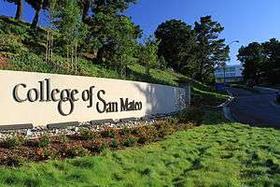It’s a fact: public funding for community colleges has been dwindling over the past several years, and so far, there is no indication it will ever come back. Despite the lack of money to pay for courses and services, the demand for a community college education is higher than ever. Covering the widening gap is easier said than done, but some community college leaders suggest that privatization is the way to go.
AACC Annual Meeting Explores Privatization Issue
The American Association of Community Colleges has discussed the dwindling funding issue for some time. However, Inside Higher Ed reports that the organization's recent annual meeting was the first time the privatization issue was raised in earnest. Some of the community college leaders attending the meeting took a stand on the issue, stating that while they wished the situation was different, it was time to move to the next step.
“My own college behaves much more like a private college these days than a public,” Stephen M. Curtis, president of the Community College of Philadelphia, was reported saying at Inside Higher Ed. Curtis used this statement to encourage other community college leaders to at least consider the idea of privatization. Supporting his stand was Rufus Glasper, chancellor of Maricopa Community Colleges.
This video gives an overview of the American Association of Community Colleges.
“We have no choice. The state funds are gone forever,” Glasper told Inside Higher Ed.
The two are not alone in supporting privatizing community colleges but face plenty of concern and even outright opposition to their ideas. Many question how privatization will fit with the traditional open-door policies most community colleges embrace. They also worry that privatizing institutions will make them unaffordable for the underserved students who need them most.
The Need for More Money
Curtis and Glasper showed a table at the recent AACC meeting, demonstrating how funding has changed at community colleges since 1977. The table was created by D. Bruce Johnstone, former chancellor of the State University of New York and leading expert in the field of higher education. The table showed that in 1977, community colleges received 36.4 percent of their funding from the state and another 34.7 percent from the city. Only 29.7 percent of the total funding came from tuition.
However, those numbers had changed considerably by 2011, when only 26.1 percent of college funding came from the state, with another 15.1 percent from the city. By the same token, a full 57.6 percent came from tuition. These changes indicate that schools are already shifting toward a privatized model, and in fact, some schools could already be considered private institutions based on those figures.
This video examines the linkages between industry and higher education.
The Benefits of Privatization
According to Curtis, his school is already considered a privatized institution according to this table published at Community College Spotlight. Curtis added that the privatization model is not all bad, as he has seen firsthand at his own school. Curtis asserts that he does not require state approval for changes to degrees or curriculum, and his board now controls tuition increases. His board also gets the final say about budget fund usage. Curtis adds that although his school has had to raise tuition rates, their latest fundraising efforts exceeded expectations – bringing in $10 million more than predicted and adding $3 million for scholarships.
Both Curtis and Glasper stated in the annual meeting that community colleges need to get creative with ways to cut spending and find more revenue sources. Curtis said he can now look out for outsourcing certain responsibilities as part of his private model, such as childcare, cleaning services, and snow removal.
“We’re working around the state. We’re not counting on the state,” Curtis stated.
Glasper added that there could be less expensive ways to offer remedial education to qualified students, such as replacing live teachers with computers. He also embraces the idea of transforming units of community colleges into profit centers that produce revenue by providing specialized training services to businesses.
Opposition to Privatization Plentiful
While Glasper and Curtis make viable arguments regarding privatizing the community college system, not everyone agrees with their plan. Inside Higher Ed reports that some community college leaders question how this model would continue to set community colleges apart from for-profit institutions. Others wondered how to get faculty on board with the idea or whether the school would now own the property and land or continue to be owned by the state.
This video discusses community colleges versus for-profit colleges.
Some are completely opposed to the idea of privatizing community colleges, both on principle and from a practical standpoint. Daniel Luzer made the point in the Washington Monthly that community colleges have only been around since the end of World War II, so there is little history to review regarding when an economic rebound might take place. Luzer added that with President Obama’s recent push to put community colleges in the spotlight, now might be the perfect time to push for more public funding to keep these institutions in business.
One attempt at a sort of privatization has failed dismally in California. Daily Censored reports that the community shot down a recent effort by Santa Monica College to move to a two-tier tuition system. A bill introduced to California lawmakers to charge higher tuition rates for high-demand classes was also denied. It appears that the community and most education leaders are not ready to embrace privatization.
Questions? Contact us on Facebook. @communitycollegereview















